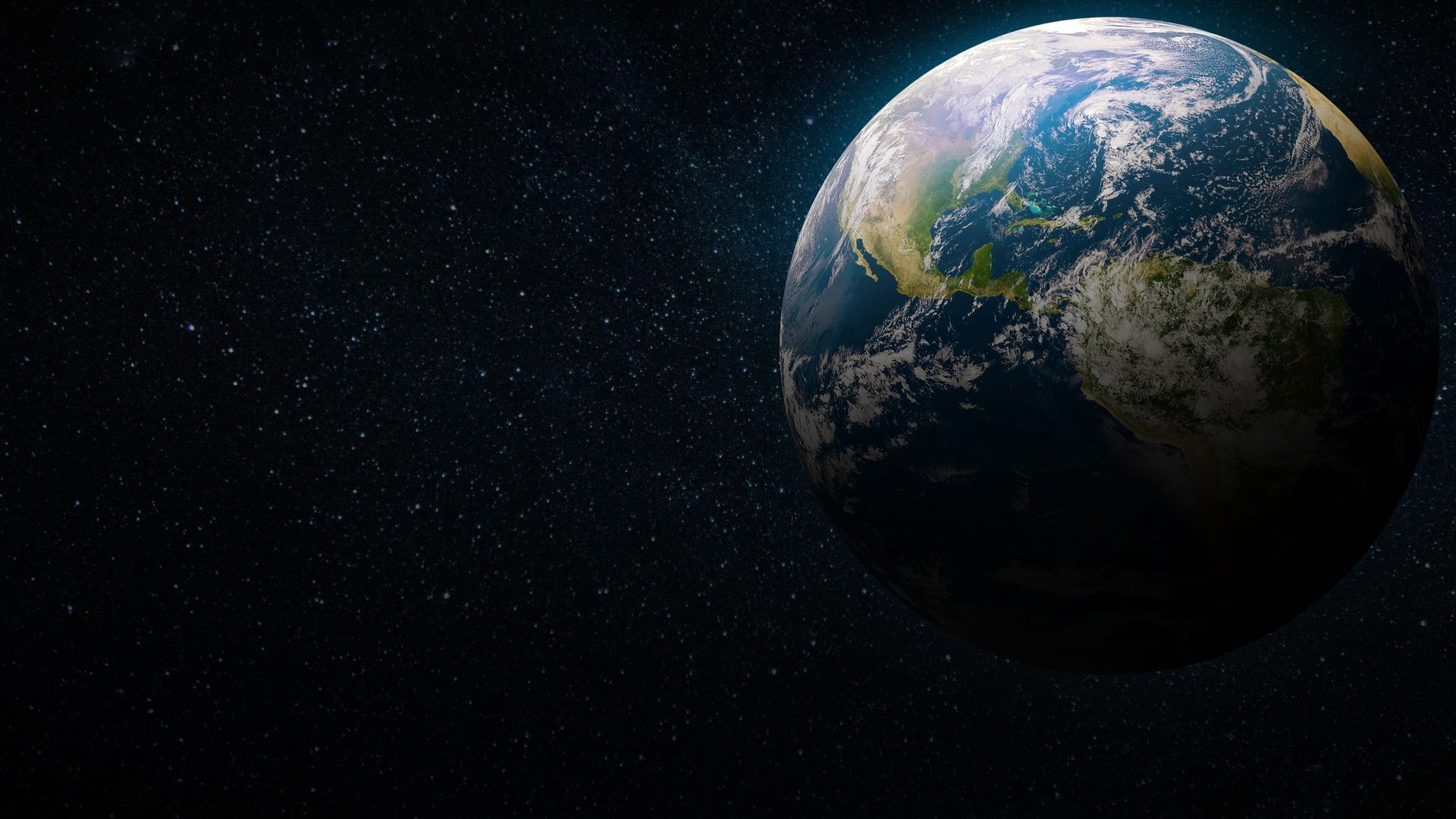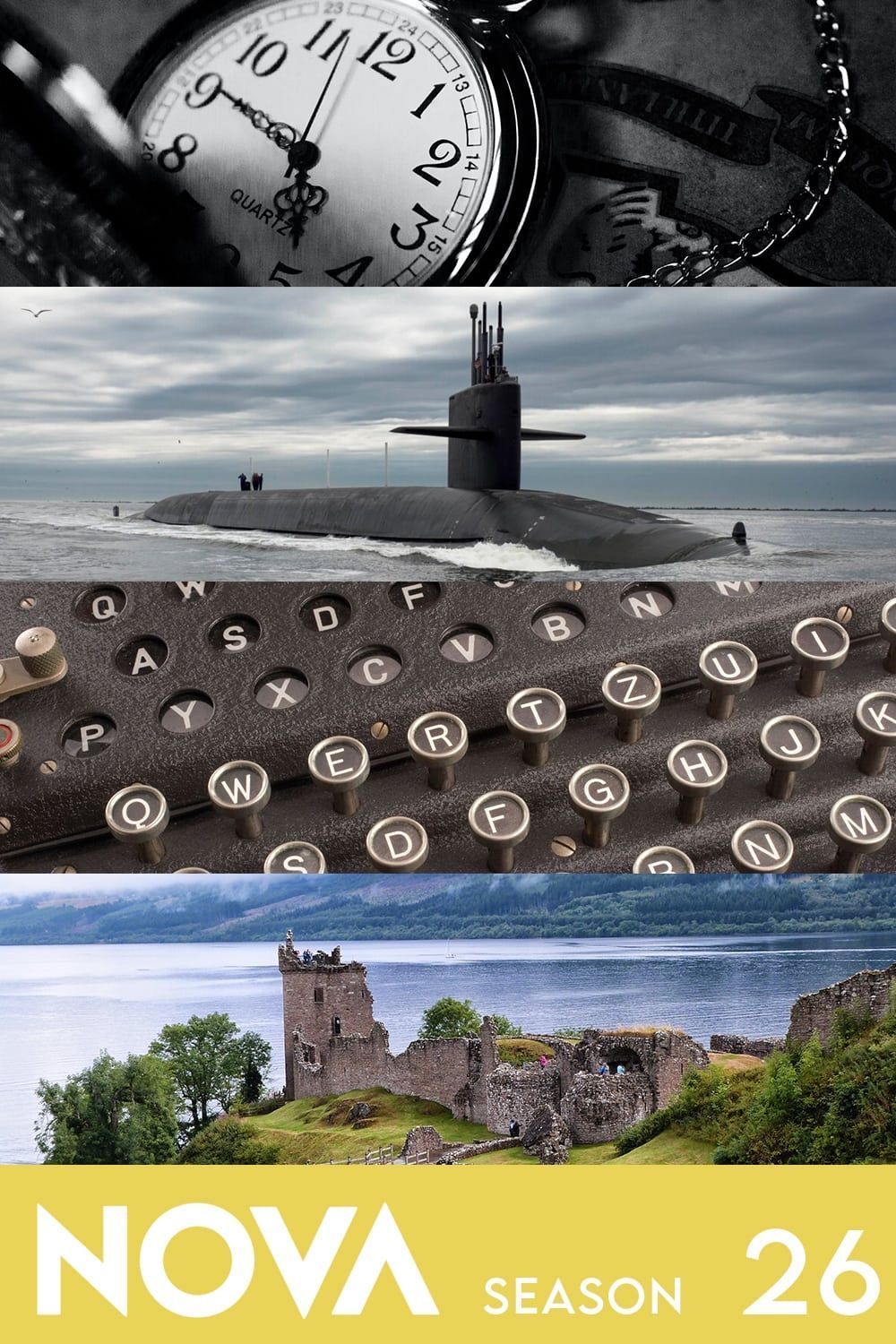

NOVA
Season 26
TV-PG
A weekly documentary series, each episode providing an in-depth look at a different subject of scientific research. Subjects examined by this show have included the cutting edge of theoretical physics, a return to the Chernobyl nuclear reactor, the long-term effects of Amazon deforestation, and the development of life-saving medical techniques.
Where to Watch Season 26
20 Episodes
- Lost at Sea: The Search for Longitude
 E1
E1Lost at Sea: The Search for LongitudeA technical problem so complex that it challenged the best minds of its time, a problem so important that the nation that solved it would rule the world's economy. The problem navigation by sea, how to know where you were when you sailed. - Chasing El NinoE2
Chasing El NinoA massive planet-sized machine controls our weather day-to-day, and our climate season-to-season. It takes an event of staggering proportions to disrupt a machine this large and powerful, a juggernaut with more energy than a million nuclear bombs. Signs now indicate that such an event is underway - El Niño. More than a series of storms stunning the California coastline, El Niño is second only to the seasons in its effect on global weather. In a P-3 off the coast, a team plunges into a storm front to explore its cause and effects. In a boat off the Galapagos, an array of buoys are checked for temperature and current data. On a mountan in Peru, signs of the devastation of past El Niños are revealed. As scientists push to extremes to explore this phenomenon, they understand for the first time the extent to which all the world's weather is connected, and just how delicate is the balance. - Terror In SpaceE3
Terror In SpaceExperience the harrowing and life-threatening problems aboard the aging Mir space station through the eyes of the Russian and American astronauts who lived through them. Feel the heat from the fire that erupted on board. See the collision between Mir and another space craft. Endure the power outages and the computer failures that have jeopardized lives. Hear the debate over whether NASA should continue to risk its astronauts by sending them to Mir in preparation for the launch later this year of the most ambitious space project yet—the International Space Station. - Ice Mummies: Frozen in Heaven (1)
 E6
E6Ice Mummies: Frozen in Heaven (1)This is the bizarre and fascinating story of the remains of Inca culture, frozen for posterity high in the mountains of the Andes. Evidence has emerged of sacrifice to the mountain gods, whose existence dominated the civilization over 500 years ago. The film traces the frozen bodies of children uncovered by archaeologists in South America, and follows an archaeological expedition to a high-altitude sacred site in search of ritual remains and another body. How did they come to be there? Why did they go to their deaths willingly? What was the religious framework that dictated their sacrifice to fierce gods? - Ice Mummies: Siberian Ice Maiden (2)E7
Ice Mummies: Siberian Ice Maiden (2)The Siberian Ice Maiden, discovered in the Pastures of Heaven, on the high Steppes, is believed to have been a shamaness of the lost Pazyryk culture. She had been mummified and then frozen by freak climatic conditions around 2400 years ago, along with six decorated horses and a symbolic meal for her last journey. Her body was covered with vivid blue tattoos of mythical animal figures. Together with the newly discovered body of a man, nicknamed "Conan," her body has now been restored, and is providing new clues to the role and power of women in the nomadic peoples of ancient Siberia. - Ice Mummies: Return of the Iceman (3)E8
Ice Mummies: Return of the Iceman (3)Cutting-edge science and archaeology are reconstructing the life and culture of The Iceman—the 5000-year-old frozen corpse found buried in the ice of the Alps. By analyzing every inch of the Iceman's body and the tools and equipment found with it, scientists are piecing together the most complete picture yet of the late Stone Age in this part of Europe. X-ray, CAT scan, and microscopic analysis of this spectacular find is revealing where the iceman lived, what he ate, and how he may have died; nuclear physics reveals that the Iceman's hair was contaminated with arsenic and copper, suggesting he was involved in copper production centuries before it was known to exist in the region. - Leopards of the Night with David Attenborough
 E9
E9Leopards of the Night with David AttenboroughNight stalkers by nature, leopards are observed both by night and day, using state-of-the-art camera equipment, to reveal never before seen hunting behavior. Filmed in the Luangua Valley in Zambia, Leopard reveals the challenges and dangers faced daily by these beautiful animals. Shadowed by hungry hyenas in pursuit of leftovers, and stalked by lumbering crocodiles hoping to tackle a lone leopard on a kill, how can they hope to challenge such beasts? - The Perfect Pearl
 E10
E10The Perfect PearlThe pearl—the only gem produced by a living animal—has long carried a certain allure. Yet the best mollusk for making this gem—the pearl oyster—doesn't always produce a pearl, and even then, the pearls are rarely perfectly round. It wasn't until the late nineteenth century, when a Japanese scientist discovered a technique to incite oysters to produce these gems, that an industry was formed. Inducing an oyster to create a pearl is only half the battle—the oyster then needs a nutrient-rich, open environment in which to grow. This NOVA program looks at the science of pearl farming, follows efforts of oyster farmers trying to cope with growing problems of pollution and overcrowding, and considers the shifting sands of dominance within the pearl industry. - The Beast of Loch NessE11
The Beast of Loch NessAn account of Dr. Robert Rines' expedition during the Summer of 1997 to find the elusive Loch Ness Monster and his attempt to counter the scepticism surrounding his famous "Flipper" and "Gargoyle Head" photographs taken in 1972 and 1975. Meanwhile, photographic experts set out to investigate the credibility of the "Surgeon's Photograph" of April 1934, the most famous picture ever taken of the Monster. - Submarines, Secrets, and Spies
 E12
E12Submarines, Secrets, and SpiesAt the height of the Cold War, US subs gathered secrets that neither spies nor satellites could expose. Until recently, almost nobody knew the hidden history of their tragedies and triumphs. As the US strove for supremacy in the Cold War, it pushed submarine technology to its limits. Breakthroughs led to unparalleled triumphs of espionage. And, missteps cost hundreds their lives. With recently declassified film, NOVA lifts the veil on tragic and mysterious submarine accidents and their high-risk spy missions that helped win the Cold War. Along with celebrated oceanographer and explorer, Robert Ballard (discoverer of the Titanic), NOVA goes in search of clues to two tragedies of the Cold War, the wrecks of the nuclear submarines Thresher and Scorpion. Recently declassified footage gives a unique glimpse of the wrecks and a chance to investigate the catastrophic accidents that overtook these subs and their crew. - Everest: The Mystery of Mallory and IrvinE13
Everest: The Mystery of Mallory and IrvinWhen George Mallory was asked why he was willing to risk his life to climb Mount Everest in 1924 he simply replied "Because it's there." In Nova Video Library: Everest - The Mystery of Mallory and Irvine you are invited to unravel some of the mystery surrounding the success of Mallory and his climbing partner Andrew Irvine, who set off to climb Everest on June 8, 1924. Did they make it to the top of the summit before their eventual demise? If they did, their success would predate Sir Edmund Hillary and Tenzig Norgay by 30 years. This award-winning film takes a compelling look at their brave attempt and includes insightful interviews with the last two living members of Mallory's climbing team. - Escape! Because Accidents Happen: Fire (1)E14
Escape! Because Accidents Happen: Fire (1)The past five years have seen remarkable progress in both treatment and basic understanding of the human immunodeficiency virus (HIV) that causes AIDS. In laboratories and clinics across the country and around the world, scientists and doctors have pooled their expertise to keep people infected with HIV alive and disease-free longer than was imaginable at the start of the epidemic. And now, through what may well be an unprecedented cross-fertilization process among molecular biologists, immunologists, geneticists, and practicing physicians, a series of discoveries about HIV-infected patients who have successfully fought off AIDS for as long as 20 years are being closely analyzed for clues to the ultimate goal in this fierce scientific battle—a vaccine. NOVA tells the story of this ongoing battle through the experiences of patients like Robert Massie, a "long-term non-progressor." Massie, a 43-year old environmental activist and Episcopalian minister was infected by a blood transfusion in 1978 and after an acute period of illness, somehow his immune system has kept the HIV virus at bay without drugs. Surviving AIDS reveals the scientific community engaged in an enormous and ongoing struggle, with discoveries traveling from labs to patients and back. And NOVA brings together the most promising research with compelling human stories of the patients and doctors who are devoting themselves to unraveling one of the most complicated mysteries in scientific history. - Battle Alert in the GulfE18
Battle Alert in the GulfAt the height of tensions in the Middle East, the United States placed a huge armada at ground zero in the Persian Gulf. This strategic move was without precedent during peace time operations—a big stick waved at a defiant Saddam Hussein. In an ironic twist of timing, at the center of this massive military force was the Navy's oldest and most celebrated aircraft carrier, the USS Independence, on her final voyage, and the newest, the highly sophisticated nuclear powered aircraft carrier, the USS John C. Stennis, on her maiden voyage. Join NOVA as it moves with exclusive access throughout the fleet, from carriers and cruisers to submarines and jet fighters - Surviving AIDSE20
Surviving AIDSThe past five years have seen remarkable progress in both treatment and basic understanding of the human immunodeficiency virus (HIV) that causes AIDS. In laboratories and clinics across the country and around the world, scientists and doctors have pooled their expertise to keep people infected with HIV alive and disease-free longer than was imaginable at the start of the epidemic. And now, through what may well be an unprecedented cross-fertilization process among molecular biologists, immunologists, geneticists, and practicing physicians, a series of discoveries about HIV-infected patients who have successfully fought off AIDS for as long as 20 years are being closely analyzed for clues to the ultimate goal in this fierce scientific battle—a vaccine. NOVA tells the story of this ongoing battle through the experiences of patients.